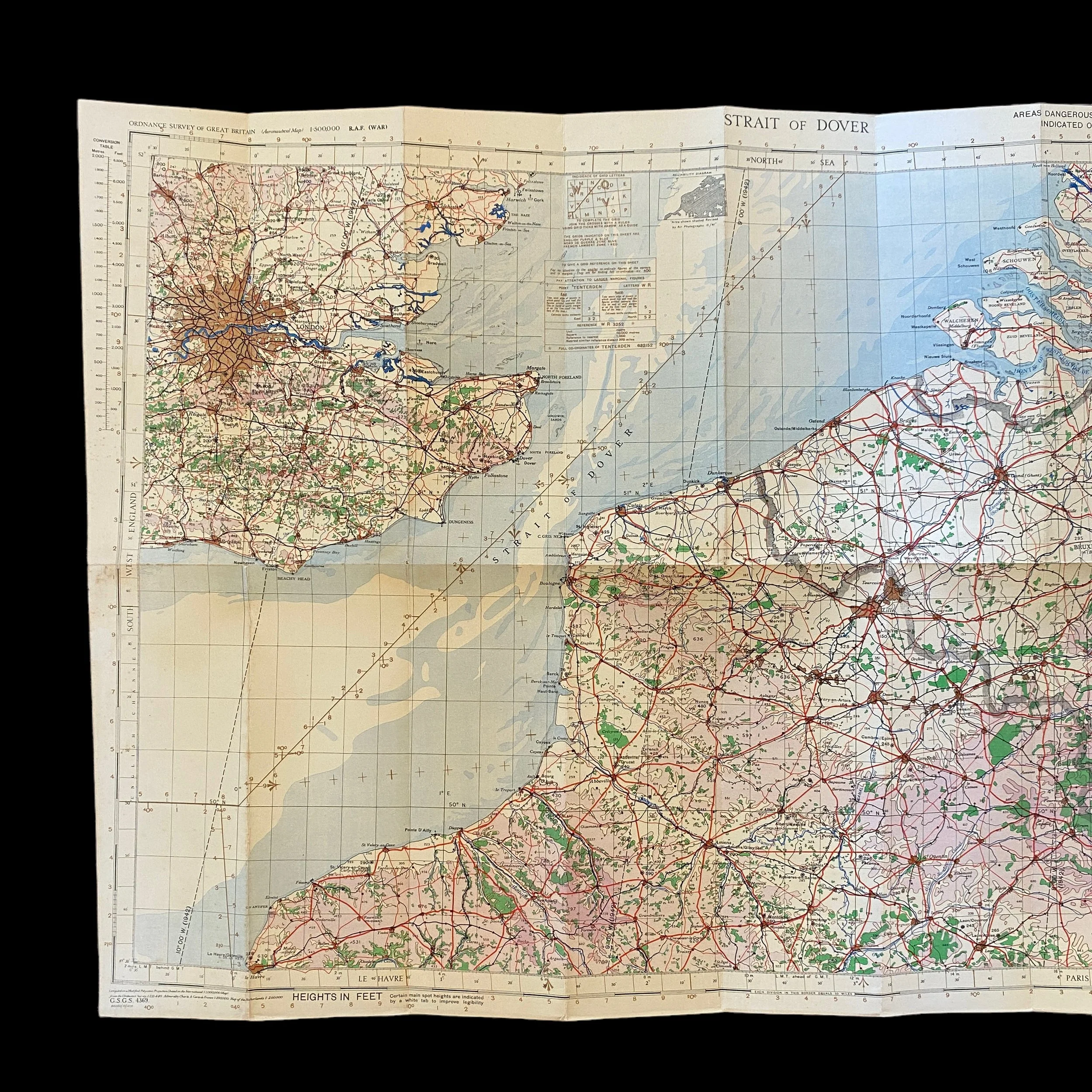WWII 1943 R.A.F. "Strait of Dover" Bombing Raid Air Navigation Map (ARNHEM, NIJMEGEN, DUNKERQUE, LILLE, and BRUXELLES)































WWII 1943 R.A.F. "Strait of Dover" Bombing Raid Air Navigation Map (ARNHEM, NIJMEGEN, DUNKERQUE, LILLE, and BRUXELLES)
Comes with hand-signed C.O.A.
This incredible and museum-grade WWII map is dated 1943 and shows heavy wear and mission use. This R.A.F. bombing raid air navigation map shows strategic targets such as ARNHEM, NIJMEGEN, DUNKERQUE, LILLE, and BRUXELLES.
The Second World War was marked by intense aerial bombing campaigns by both Allied and Axis forces. The bombings carried out by the US and British air forces in 1943 and 1944 over the Strait of Dover were some of the most significant missions of the war. These raids were crucial to the Allies' strategy, and their success was vital in turning the tide of the war. Additionally, the efforts of the Allies in Operation Market Garden in 1944 helped secure a crucial victory and advance the Allied forces into Germany.
The bombing raids over the Strait of Dover were carried out with the goal of destroying the German army's communication and supply lines. The strait provided an important transportation route for German forces to move troops and supplies between Germany and occupied France. By targeting the ports and shipping convoys in the strait, the Allies aimed to cripple the German army's ability to operate effectively on the Western Front.
The US and British air forces launched a series of bombing raids on German shipping in the strait, which were later joined by the Canadian air force. The bombing campaign was dubbed "Operation Starkey" and continued through 1943 and into early 1944. These bombing raids were incredibly dangerous for the Allied pilots, who faced heavy anti-aircraft fire and attacks by German fighter planes. Nevertheless, the bombing campaign continued, with the Allies dropping a staggering 18,000 tons of bombs on German shipping in the strait.
The bombing campaign was successful in achieving its objectives. By destroying German shipping in the strait, the Allies were able to severely limit the German army's ability to resupply and reinforce their positions in France. The success of the bombing campaign was a critical factor in the success of the D-Day invasion, which took place on June 6, 1944.
Operation Market Garden was another crucial mission carried out by the Allies in 1944. This operation was designed to secure a route across the Rhine River into Germany and shorten the length of the war. The operation involved an ambitious plan to capture a series of bridges in the Netherlands, which would allow Allied forces to cross the Rhine and advance into Germany.
The operation was carried out in September 1944, and while it was initially successful in capturing the first few bridges, it ultimately failed to secure the final bridge in the town of Arnhem. The failure of the operation was a significant setback for the Allies and cost them thousands of lives.
Despite its failure, Operation Market Garden had a lasting impact on the war. The operation showed the Allies that the German army was still a formidable force, even as it was being pushed back across Europe. It also demonstrated the need for careful planning and coordination in military operations and highlighted the importance of intelligence gathering.
In conclusion, the bombing raids over the Strait of Dover in 1943 and 1944 and Operation Market Garden in 1944 were critical missions for the Allies during the Second World War. The bombing raids were successful in severely limiting the German army's ability to resupply and reinforce their positions in France, while Operation Market Garden demonstrated the challenges of conducting large-scale military operations. These missions played a crucial role in turning the tide of the war in favor of the Allies and ultimately contributed to the Allied victory.